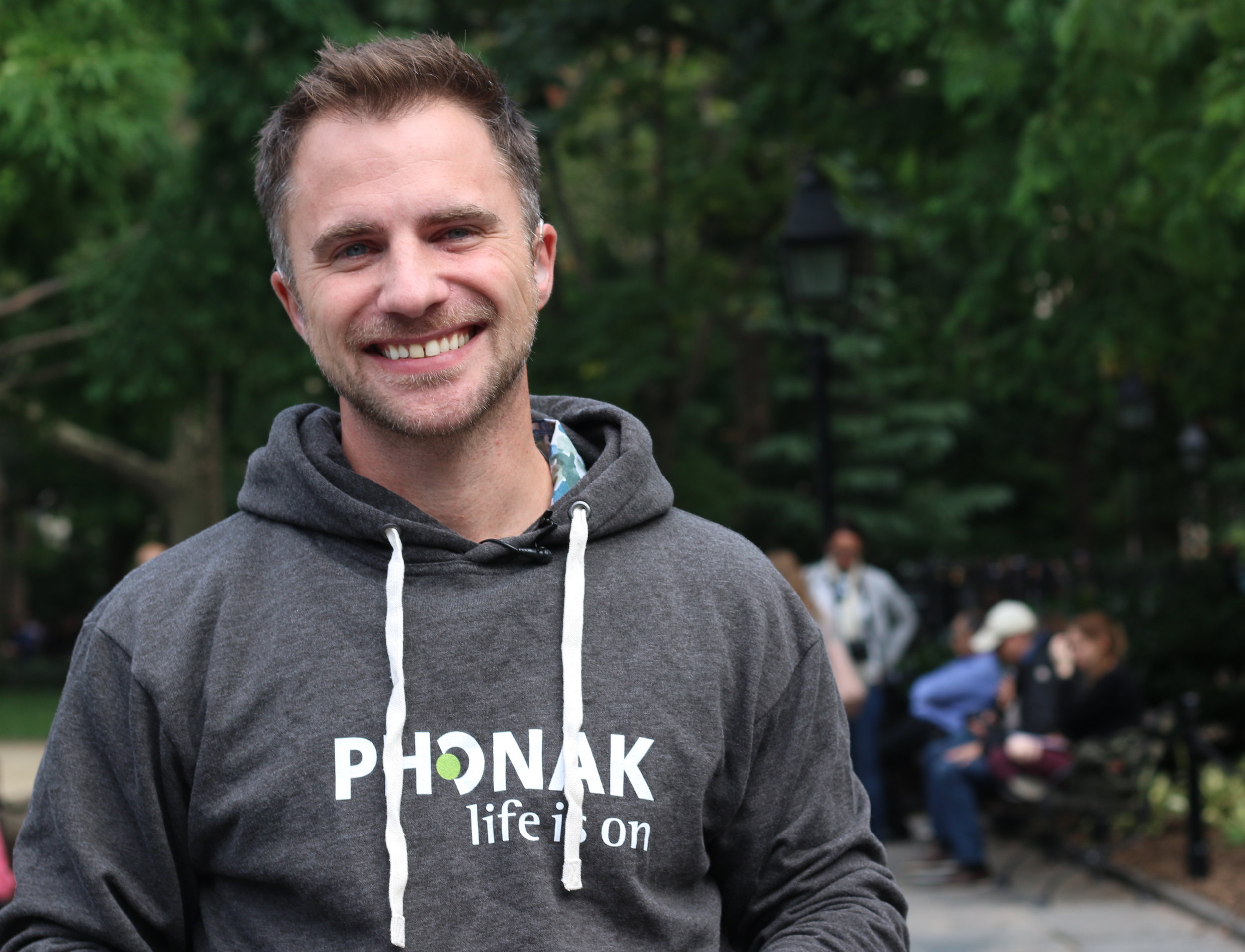By Carol Stoll
After his first audition on America’s Got Talent, D.J. Demers was described as funny, original, and likable by the tough, at times brutally honest judge Simon Cowell. Demers performed a stand-up routine that included witty banter with the judges and had the audience in stitches. Demers is now an award-winning stand-up comedian and has appeared multiple times on the late-night talk show Conan. He also happens to have profound hearing loss.
As an infant, D.J. had many ear infections and when his parents noticed that he wasn’t hearing well, they took him to an audiologist. He was diagnosed with severe-profound bilateral sensorineural hearing loss and started wearing hearing aids in both ears at the age of four. Not wanting to be defined by his disability, D.J. turned to making others laugh. He dreamed of being a comedian since childhood, and finally gave stand-up a shot when he was 21. “I was instantly hooked. Best decision I ever made,” he explained.
D.J. Demers is not your typical cynical comedian; he always has a positive outlook and makes light of heavy situations. His goal is to make his audience feel “free from concern,” as put by his comedian idol Jim Carrey. Demers likes to frequently interact with the audience, but sometimes has difficulty hearing them from the stage. Instead of getting discouraged, he simply makes it a part of the show. “It’s never a negative experience because I never make it one,” Demers said. “An audience follows your lead and my aim is to always keep it positive.”
Demers has also found a perfect middle ground with regards to discussing his hearing loss during his comedy shows. His jokes cover a variety of everyday topics, but he doesn't shy away from proudly calling out his hearing aids and describing the unique, humorous situations that he faces because of his hearing loss. For example, he points out the quick transition between pillow talk with his girlfriend and silence when he takes out his hearing aids to go to sleep. He asks her for a “last call” on final thoughts for the day and then goes to sleep in silence. He brags about sleeping like a baby with no distracting noises and says in a sarcastic deadpan voice, “It really makes you wonder...who has the disability?”
D.J., now 31 and residing in Los Angeles, has been recognized for his comedic talent with multiple awards. He won the 2013 Toronto Comedy Brawl and the 2014 Homegrown Comics Competition at the Just For Laughs comedy festival in Montreal. He was named “Best Breakout Artist” at the 2015 Canadian Comedy Awards. He appeared on season 11 of America’s Got Talent in 2016, and he has performed a stand-up routine twice on Conan, in 2014 and 2017.
This past October and November, Demers performed across the country on the Here to Hear Comedy Tour. The tour, sponsored by Phonak, aimed to “shatter stigmas and raise awareness about hearing loss through the power of laughter.” Demers was grateful for the opportunity to connect with hard-of-hearing people and valued all of the conversations he had with those he met along the way.
Demer’s pointers for those who are just getting a hearing loss diagnosis include: figure out and implement the necessary tools needed to help you in your day-to-day life, surround yourself with positive people, and don’t be afraid to advocate for yourself. For those with hearing loss who are passionate about comedy or any type of performing arts, Demer advises, “Just do it. That’s it. If it excites you, do it. Don’t impose any fictional limits on yourself.”




